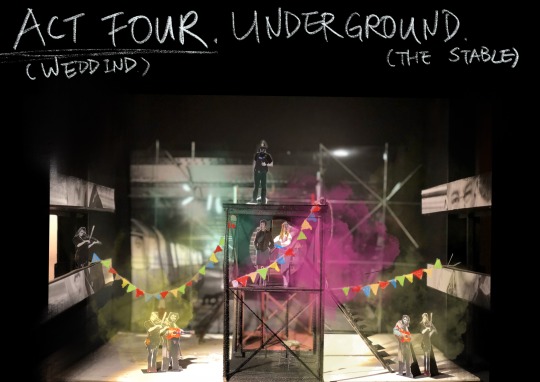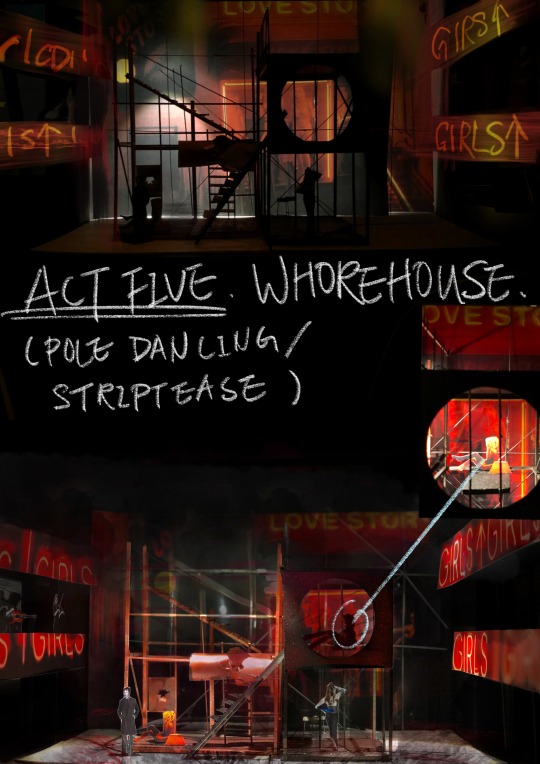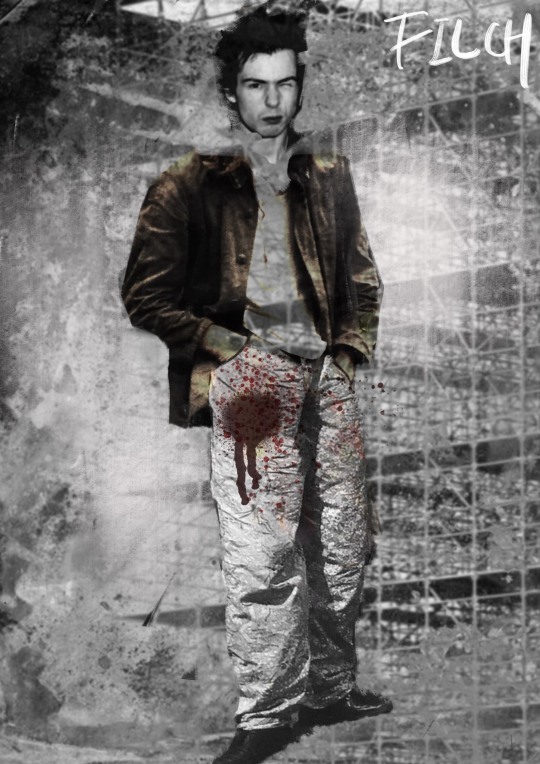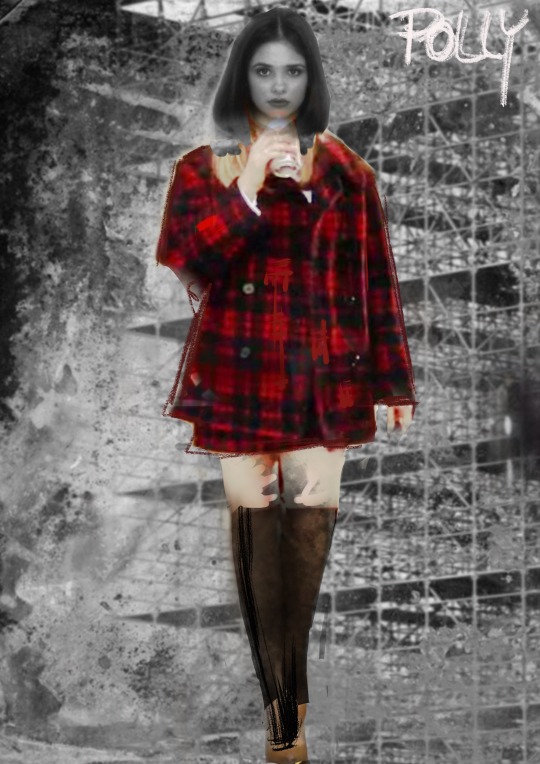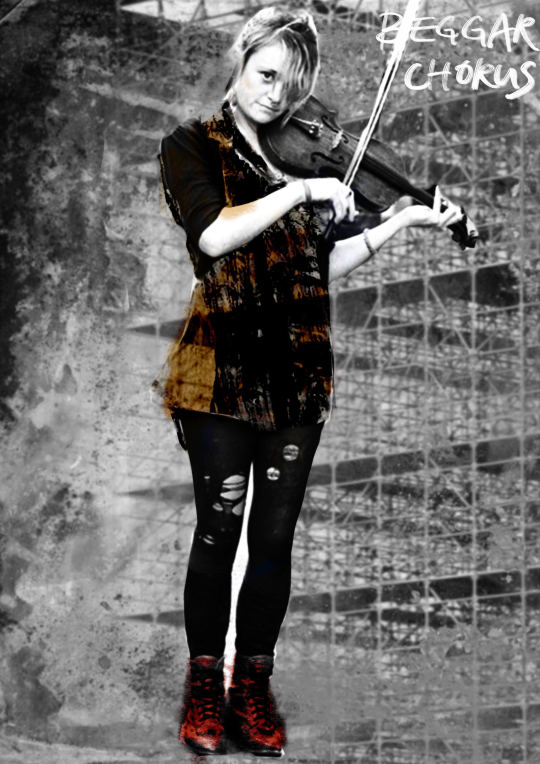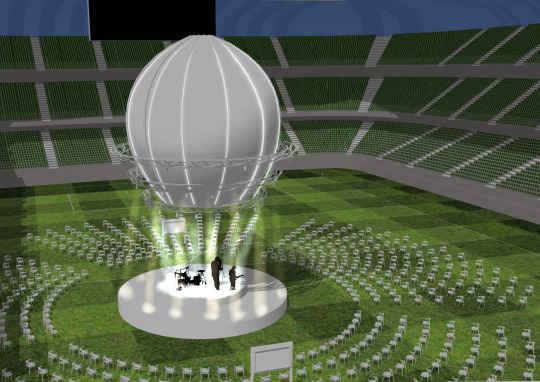Text
UNIT 2-Theoretical and Critical Essay- How might ‘the live’ contrast ‘the mediatised’ in creative practice
What is live performing art? Does it refer to the performance that the audience and performers in one space to share each other’s time together? Or the performers and audience connected together during performing? Can we convey the clear and more unique performing arts to the audience by means of technology or “the mediatised”? In my understanding, 'the mediatised' is to record the performing arts through some media, the audience do not have real contact with the performers face to face, but watch the show through other media. one of the lecture I heard from NT is about ‘liveness to document’ and ‘document to liveness’,according to Schneider(2004,43) “the work results in a denial of the audience by producing a document that will be exhibited as an indication that’you’(the viewer) were not present at the event-you missed the action contained by the frame but more than the frame. The paper, frame, and photo of the action all represent to the viewer that which the viewer missed-that which, standing before the document, you witness yourself missing again.” When I shinished this lecture, I’m started considering the relationship of audience and the media as the ontology. When we facing media, what does performce mean in it? If we watched the performance directly, what is the difference? thus, I choose the second one topic which is How might ‘the live’ contrast ‘the mediatised’ in creative practice. I choose this topic because I want to explore answers of questions mentioned. In this paper, I want to share my thoughts on them through two examples,The Wooster Group and Miss Julie, and demonstrate the subtle relationship between them through theories and examples.
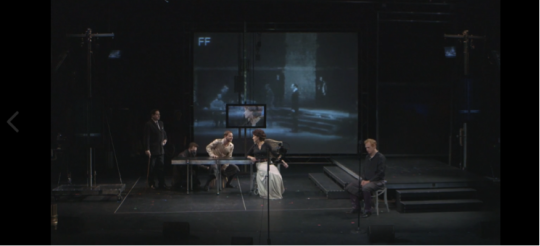
Peggy phelan(1994) believed that“performance’s life is only in the present.”She declare that performing art cannot be preserved, recorded, or presented in other ways, because once it is easily circulated and quantified in the market, performance’s ontology will be diminished, or we can say the expressive power is weakened. However, there are a lot of performing groups try to bond the mediatised and live performances, their approach is very different and innovative. Some of them become world-wide experimental performing groups. The Wooster group is one of them must be mentioned. They like to combine high-tech and performing arts together to form a variety of experimental performance style with the combination of drama, text, dance, media and other elements. For the audience who like the pioneer performing arts, their repertoire is don't-miss show. They are good at using variety of high-tech, such as live stream, recorded sound and pre-recorded video into their performance work. The company has become the American theater's most inspired and articulate interpreter of an age in which machines mediate between the perceiver and the perceived, between subject and object. In its productions of the last 15 years in particular, it has increasingly specialized in ravishing, meticulous marriages of live and recorded performance that make it shatteringly clear reality ain't what it used to be. For instance, in "Hamlet", they've taken the filmed performance of Richard Burton's 1964 Broadway Hamlet (directed by John Gielgud), which was screened across cinemas in America in a kind of proto-NT Live way, and are essentially attempting to copy that performance – live – as it plays projected onto a large screen in the background.Its seeming simple stage design and costume design was actually shot by 17 cameras, and broadcast live in more than 2,000 American cinemas, brought thousands of audiences in different cities a new dramatic experience. They called it 'theatrofilm', which followed the principles of timeliness of stage performance, all film were destroyed after the completion of the play.
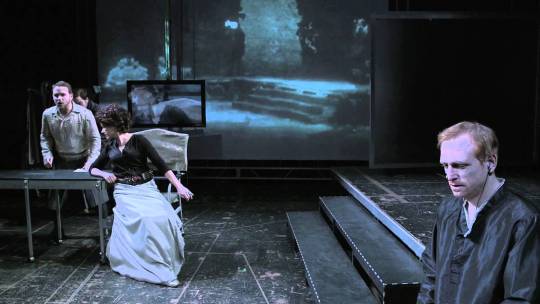
The mix of on-site and real-time practices, alternate among the technical staff, actors and films, which produced an interaction on the stage, highlighted the dramatic contradictions and characters. In addition of this, there is a big screen in the center of the stage, which is the most important film projection platform, meanwhile, in front of the big screen there erected a screen of TV size, mainly used to display close view of the actor's expression. In addition, two more screens on both sides of the stage are controlled by the performers themselves. These screens focus on the details of the costume or the hair of the performer. The actors on the stage repeat the scenes of the movie which showed on the big screen, the small screen performance becomes prominent at that moment, and they are the real performance and can be contrasted with the movie. The original film is projected on to a large screen at the back of the stage – it stutters and jerks, actors suddenly appearing and disappearing like manifestions at a dodgy seance – while in the foreground the Wooster Group recreate it, as if possessed by it, and masked technicians glide furniture across the stage like magicians.At the end, Shepherd's dead prince stands up and take a bow as the credits for the 1964 film roll. Burton and Gielgud, meanwhile, are dead. There is no end to being dead.

At some point, audience even cannot tell is it the scene in the movie reproduce the performance on stage, or the performance was repeating the scenes in the movie. Sometimes acceleration and cutting is also used in the central scene of the stage, this approach makes the audience doubt the dramaticism of the play, and it may produce an alienation effect. Alienation effect is a performance theory introduced by the German theater theorist and playwright Bertolt Brecht. It refers to the audience is hindered by simply identifying itself with the characters in the play, Brecht call this drama as epic theatre. Brecht argued that the drama should serve the government; audience should not become immersed in the fictional reality of the stage or become overly empathetic of the characters. In his script, he likes to create foreign and vague background, with a storyteller to tell the story, in order to achieve the alienation effect between the audience and the play. Alienation effect asked artist never acts as if there were a fourth wall besides the three surrounding him and the audience can no longer have the illusion of being the unseen spectator at an event which is really taking place.The use of direct audience-address is one way of disrupting stage illusion and generating the distancing effect. In performance, as the performer "observes himself", his objective is to appear strange and even surprising to the audience. He achieves this by looking strangely at himself and his work. In the Wooster Group version’s Hamlet , people would find that the scene of the film and the performance on the stage is basically the same, but with the proceeding of the performance, the audience began to re-examine this new version of Hamlet through some special treatment means, which is the way Brahtt used to describe some of his characters. In my opinion, the Wooster group showed it out with live performances and film on the scene.
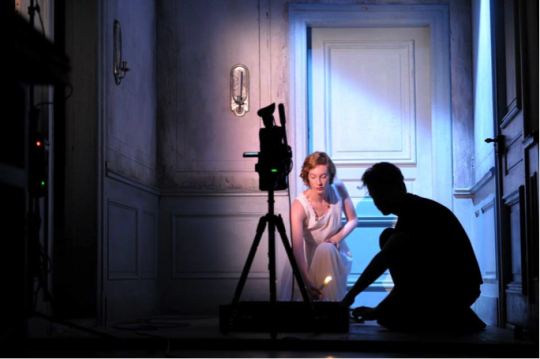
Another example is "Miss Julie" I watched at Schaubuehne in Beijing three years ago. "Miss Julie" is the magnum opus of the Swedish playwright Johan August Strindberg. On the stage there built a real house, a wall, a window and a door, they are all facing to the audience, that is, block the "fourth wall" of the drama. As the play started, I began to feel I’m watching a live film, the actors walked into the room, the camera to follow, audience still can see the performance from the big screen on stage, but audience can see more content from stage than watching big screens. It can be seen that the play is unique to combine the drama and the film, as the performance going, there are six cameras were shooting. The performance on the stage is presented in real-time on the projection screen, but this image is not just recording since the editor constantly switched the lens and the scene, so that the stage became an on-site film and synchronized editing room. That moment I felt like I have a God's-eye view, I can see the actor's expression and even breathing through close-up on the big screen. The film was shooting, but the actors seem to completely do not know and naturally carry out their actions, which made I have a feeling of peeping, perhaps because I can see the reality of the performance and the performance through the lens at the same time, that is, we watched the live show through live broadcast at the same time. Normally, we watched the live recording of the performance afterwards, which gives a sense of time lag between 'me' and 'show', but now it is completely different situation, it is more like a drama installation art works.
Performing art is the art of the scene. The audience is not only to watch, but also to perceive. Or we can say it allows the audience to jump into and jump out of the play, which may be the unique charm of the drama. "Miss Julie" achieved great effect of "into" and "out", the creator strengthen the gap and use the film to bring the audience into the scene at the same time. This has gone far beyond the attempt by some theater creators to break the fourth wall. It can be seen as the creator to open the entire narrative space, so that the stage could be presented to the audience at the same time like the both sides of a Mobius band. So as to achieve the ultimate effect of "watching": audience to see the actors perform on stage, audience to see the photographer shot actors, photographer watching the actor while shooting, the audience to see the staff place the Camera and manufacture sound behind the scenes…The formalization of "Miss Julie" make the drama to become three-dimensional (multi-angle, multi-screen), some people feel confused: for such a work, should I watch the stage drama, or the movie on the screen of the stage? After all, because of the actual viewing distance, to look at the big projection screen is much easier than trying to capture the actors blocked by stage setting through naked eye, and many of the details of the choreography design can be seen clearly only through the lens magnification effect. Michelle on stage faithfully reproduces a 19th century Swedish country kitchen, all the actors were wearing clothing of 100 years ago, with stage property from age. "You can watch the kitchen, you can also watch movies, and the film shows the inner world of an unimportant person doze in the corner, which may be more sympathetic to the contemporary people." said the director.

That theatre is performed live is often presented as central to its definition, particularly when making contrasts with non-live performances on film or television. Additionally, this 'liveness' has increasingly become seen as something consumed when attending theatre performances, a commodity specifically purchased by audiences, again especially in contrast to non-live performances.But at the same time you can also say that the stage art has become flattening - the film has brought a variety of scene (close-up, mid-shot) and the moving lens, so the play like be cut open, the audience can see clear from inside to outside. It reminds me of Plato's allegory of the cave: the prisoners in the caves can only see the shadow of the torch on the wall, and they regard the shadow as a real being. "Miss Julie" seems to be in the form of film and drama combined, to convey audience contradictory of real and illusory at the same time. I’m not sure how the director is thinking of this play, in my opinion, the director must have a very profound study of the audience psychology. He may want to solve the problem of aprosexia of the audience during the performance. He wanted the audience to see clearly the most contradictory part of the play. So he takes various measures, in which the most important mean is to use the "montage" to tell the story more fluently; the live-sound enhance the dramatic effect; and the close-up brings performance details to the audience. Cameras on the stage can be abandoned to draw audience's attention to the scene, it can be also used to highlight the actor's eyes, so that the audience can see the inner feelings of the characters. These are we cannot get from traditional drama watching experience.
However, it may bring some problems as well. Since the filming was taken at the same time on the stage, the plot of the drama was broken down into pieces, the audience may confused on how to choose from numerous point of view: to see the photographer, or the film screen, or repeatedly moved scene? Strindberg’s work is flat, and the form of filming makes it more difficult for the audience to feel the original logic, structure and direction of the play. In this intricate situation, what kind of influence did the multimedia audio and video technology and image montage means to exert on the stage performance? What kind of butterfly effect it took to the micro environment of the theater? Did they really expand the audience's sense as we expected?

After The Wooster Group and Schaubuhne, it is inevitable to avoid the issue under discussion, which is called "postdramatic theatre", there are two important features of the postmodernism theater: anti-narrative and dissociated symbilize. Anti-narrative might refers to that the simple linear narrative layout and structure is gone, the performing arts and literature have a less intimate relationship. In the performance space there is no more introduction, elucidation, transition and summing up, but ritual scenes one after another. This is reflected in both the two plays, both performances have given up traditional drama narrative style, brought more subjective feelings, the subjective feelings can come from the audience, it can also come from the director. The dissociated symbilize may refer that the basic narrative structure becomes no longer strong, the scenery and the device, the music and the sound, the actor and the performer, and the language and the text constitute the images of no-associating. The performer may be just a symbol, there are a lot of images on stage, like a huge collage, the audience could combine them from their will. Some images may be less important in plot but stimulate the audience, so that the audience could recreate with their imagination and interpretation. Coupled with contemporary multimedia technology, through the stream of consciousness narrative, image montage, audio broadcasting, actor body and other experiment, the dramatic interpretation was decentralized to each audience furthest, so each one could establish a unique and autonomous perception, the traditional theater space has been greatly enriched and expanded.
In conclusion, no matter it is 'the live' or 'the mediatised', in my opinion, the most important part is to make the audience go to see it.Since the need for liveness seems not to be dying but developing, mediatised live might just be a first step for a new experience of theatre. Mostly, all relies on what you are looking for in a performance. If you are looking for mediatised live and you find mediatised live, you will most likely be satisfied, but if you are looking for liveness and finds live mediatised, you might be dissatisfied. Two different ways let the audience see the performance with different level of depth, and make me think about the boundary of performing arts, is it expanding in reconstruction, or is it becoming ambiguous in deconstruction? That is what I want to continue to explore in my future study on the performing arts.
References
Auslander, P.(2008) liveness:performance in a mediatized culture. Published by Routledge.
Brantleynov,B.(2007)Availiable at: http://www.nytimes.com/2007/11/01/theater/reviews/01haml.html
looks it not like the king? Well, more like burton (Accessed:2007,1)
Centre Pompidou.(2006) The Wooster Group: hamlet, or the tragic of the surface.Festival d’Automne.
Lehmann, H-T.(2006) Postdramatic Theatre. Published by London and New York: Routledge.
Ming, S.(2014) Availiable at: https://site.douban.com/lzhstudio/widget/notes/16259016/note/386093885/(Accessed:2014)
Phelan, P.(2004) Unmarked,the Politic of Performance. Published by Taylor & Francis.
Schneider, R.(2004) After Criticism in gavin butt.
The Wooster Group HAMLET https://vimeo.com/110411210
0 notes
Text
UNIT 2- Critique 2 - Film - Isle of Dogs
04/2018
Film
Isle of Dogs
Director: Wes Anderson
Wes Anderson was my favorite director.
However, 'Isle of Dogs' is Anderson at his worst.

The title reflects my first reaction after watching the movie. The story of Isle of Dogs took place in modern Japan where most people spoke Japanese. And to make it easier for western audiences to understand, the dogs' bark in the film has been translated into English, and many superstars in Hollywood dubbed for it. When watching a movie, the first thing that makes people feel was that the people and the dogs are separated from the language at the first sight.
In the future fictional city, the mayor ordered all dogs to be transported away from the city's rubbish island because of the popularity of the dog flu. But the mayor's adopted son, 12-year-old Atari, hijacked a plane by himself and broke into the isle of dogs in search of his dog. The island was littered with rubbish, but there was still shocking decadence and alternative sense of beauty in Anderson's fine art. A large of roles were facing the lens in the axisymmetric composition, and they were shot at high angel from the objects above, which brought quirky sense of humor. For any Anderson's fans, this movie Isle of Dogs has already put his aesthetic into practice perfectly. But from the second half of the movie, the movie made my heart very uncomfortable, which was from the most profound human cruelty gleaming in the final conclusion.
From the beginning, we were put in the dog's perspective. Yet under the circumstances that almost human beings have betrayed their partners and supported to exile the dogs, only the dogs were still eager to get back to their owners, in addition to the stray dog Chief, and we could also regard Chief as a special leading role. But the hardest part about the film is the process on how the boy Atari tamed Chief. At the first night, Atari played a pipe on the radio and ordered the dog to sit down arrogantly. It's not just that the audience can't understand Atari's language, but more importantly, his strong body language, cold expression and kabuki style of performance have alienated the audience.

Chief refused. That's right. Since we're in the perspective of dogs, how could we possibly accept the leadership of the "human" in the movie? However, when Chief and Atari were alone together, Atari tried again to force Chief to pick up the stick, but he complied. From this moment, the film starts to get confusing. Anderson devised a trick here, he must try to use the sliding action of the boy to break his cold impression at the beginning, here to make him more warm like through the details of the infantile action. But the design appeared to be stiff and deliberate in the film. The relationship between human and dog in Isle of Dogs once again reflected our deepest human cruelty. No matter how many times movie emphasized "Dogs are man’s best friends" or "Because he' s a 12 - y - o boy. The Dog loves those", only cold domination and submission left in actual behavior where don't have any sense of friendship. Without Chief’s later obedience, there may not be the so-called warm ending.
All of these still reflect the absolute dominance of anthropocentrism to the animals in the real world. No matter what mistakes humans have made, animals must unconditionally forgive and obey, and we can call it "love".
0 notes
Text
UNIT 2- Critique 1 - The BridgeTheatre - Julius Caesar
03/2018
The Bridge Theatre
Julius Caesar
Writer: William Shakespeare
Director: Nicholas Hytner
Production Design: Bunny Christie
Costume Design: Christina Cunningham

Before I decided to watch Julius Caesar, actually I was very hesitant, because this is a historical play of Shakespeare, I was afraid I don't understand the dialogues in Old English, and it might be hard for me to understand the play since I did not know much about history. But one of my favorite actors Ben Wishaw were playing the role of Brutus, and, I checked the creation background of the play which was presented in the present age by the director and more close to our modern living environment, making the work more like a politburo. Therefore, I decided to watch this play.


I was really very grateful to my own decision after watching it. First of all, I think the play had two big characteristics; the first was that Bridge Theatre set Arena Theatre as the pattern of the play which was quite suitable for the play to show the current political situation in it. Arena Theatre refers to the circular stage, or the center of the stage, but in fact, Arena had a layer of implied meaning, specifically, refered to the meaning while watching in the view of various angels in the two dimensions: vertical and plane. In the presentation of this work, Arena Theatre was not only a way of watching drama, but also an understanding of the expression dimension of drama text. Because in this kind of theater, no viewing position can not guarantee that audiences can read all the information of the work, and no viewing Angle was completely correct. Perhaps this was the basic context in which the production of political discourse is explored.

The second biggest feature was that the audience can enter the center stage of the stage and could become a member of the Roman mob by spending 25 pounds, cheering for Caesar and shouting for Brutus sometimes. The work thus had the nature of immersion drama. The setting itself was telling us what's important in this story, whether it's the protagonists in the center of the stage, or the people who followed the lead; Who was the most important? Was it the leading actors who control the whole play or the group who were following the lead whose collective identity thus made? And I think that's probably one of the significant questions mentioned by the production through the art of drama.

Along with the advancement of the plot, the rhythm of the drama was a process of acceleration, so it would make the first half of the play a bit dull before the assassination plans, but since after the assassination of the play came, the play seemed to be better presented to the end of it. And there were some important plot points in the first half, the performance of the main characters were contained a bit more by pivot items, even it was considering the basic image expression of the stage, also made the narrativity lose some focus to some extent. Considering the actor's part, Ben Wishaw’s performance did not let me down including the powerful aura while speaking in front of the people and his disappointment when he lost his teammates and so on. He had detailed depiction on the figure in the aspect of rationalization which also was presented to be very complete, and his abundance in mood even exceeded my expectations of his performances. Not only Ben Wishaw, but also Michelle Fairley, who plays Cassius, and David Calder, who plays Caesar, also had very classic performances. As a whole, the actors made this play more excellent.
In short, at first I went to watch the play driven by an actor, but I think this is a play that should not be missed for a fan of Shakespeare or a certain actor.
0 notes
Text
UNIT 2 The Design Proposal of The Threepenny Opera
Most of Brecht’s plays are overtly political, reflecting the turmoil that he sees around him. Despite the show claiming that it is subverting traditional opera my not having a moral, there are some key themes throughout the play which I believe leave the audience to comment and reflect on what’s happening around them. These include; the arbitrariness of moral values, particularly seen through Beachum as he subverts religious messages and plays on the sympathies of the rich for his own means. The conflict between self-interest and love, shown by almost every character in the play except for Polly who truly loves Macheath, Macheath, Peachum and Jenny all act for the most part based on the need or desire for material things such as money instead for love. Brecht also explores the competitiveness of the capitalist system driving people to do anything for money, including crime, prostitution, betraying their friends and taking advantage of those less fortunate and the brutality of humans. All of these are still relevant today and I wanted to create a show that clearly shows these themes today. Despite the fact that Brecht tends to make a point through distancing the audience, Director and I wanted to make it more relevant to out time period.

The original play was set in victorian London, however we wanted to update the location of the play to a more modern setting. This would be to make it more relatable to the people watching. Brecht believed that theatre should be used to make a point about the social and/or political circumstances within the current society, so within that particular vein I would like to update the play to represent that.
London, however is the kind of city that has been around for so long that it is full of architecture from different eras. By using some of the older, more run down architecture for set we can show that the problems are timeless, they have always been here and always will be unless we do something about it - eg homelessness being a big one of the social issues tackled in the play.

So, after the first meeting with the director, we confirm that we want to update the location of the play to the modern society, because it could be more related to audience’s life. In the second meeting, when I visited the theater with the director, we found that the structure of the theater is very special. The audience sitting on both sides can see not only the stage, but also the opposite auditorium, which is also the important part in my design. And we let the actors move in the audience and play the instruments.At the same time, we want to use the space on the both sides of the audience seats and let the actors move in these space and play the instruments.

For this set design, I pick up three main elements into my stage design:Multi-level platform (they have different height and structure), a rotatable circular screen and projection installations.
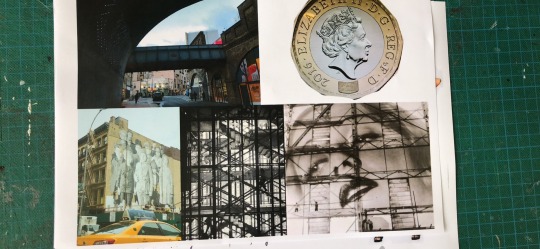
Firstly, I want to talk about the main sets of the stage, the platform.There are nine scenes in the play, we can use the different position and angle of the structure to change different scenes. As the result, they can be transformed into four different spots through different combinations.The reason why I decided using multi-level structure as my main set is because, firstly, director want to play with levels on stage, so that’s main requirement. We can create a variety of movement of the actors. Secondly, they can also represent different levels of characters. In some scenes, people with higher class can stand at a higher level. i pick up the elements of the architecture of london ,and try to mix different shape and structure in these platforms. If you look it in different angle, you’ll see different colour and material. It is the fusion between realistic and abstract.

And then i would like to talk about my second element, I designed a circular screen, I set up it behind the main structures, and using projector to put some images in it. And it was hidden on the side stage. In some scenes, this circular screen spinning from the right stage to the lift stage slowly.
This circular screen has two meanings. the coin and the moon.The coin could represent capitalism. Mr. Peachum gave in this inspiration in particular , He seems to see everything in terms of business and more specifically his own potential to make a more sizable amount of money, including most importantly his own daughter, he refers to in terms of a commodity or an investment many times throughout the play, apparently without a care in the world for her own desires and feelings, and really not even acknowledging that such things exist. So, he seem to me to reflect a critical view of business, and the capitalist system in general.
And also, it looks like the moon, and it represent love and hope.The Peachums sing about it mockingly while discussing Polly’s love, and Polly sings about the moon in her song about falling in love with Macheath. Later, after Macheath has left her, Polly describes the moon as “thin as a worn-down penny.” The sweetness of the moonlight always contrasts with the hardness and dirtiness of the world below. The moon also represents hope. Brown refers to the moon when he realizes that he betrayed his friend, Macheath. Brown stares at the moon and hopes his team of police do not find Macheath, but his hope falls when he sees Macheath in the jail cell.
The third element is projection installations. This play has 9 scenes, and projection could be the most effective way to changing the spots and the background for me. As you can see, i set up the projection behind the background, actor will not disturbed by projection’s shadow. And also, we set up the projector from the audience seats. The image will change during the scenes changing and the audience was surrounded by projections. This is the alienation of the audience, Brecht believed that audiences became too emotionally involved and drawn into an illusory world by attaching themselves to fictional characters.This loyalty to the characters robbed the audience of their ability to think critically and prevented them from understanding the world and therefore changing it. The primary way that Brecht creates alienation in Threepenny Opera is by using songs to disrupt realistic scenes. And i employ projection this way to enhance alienation effect. The audience watching the performance and meanwhile watching the projection.


We wanted costume influences from the 80s and 90s. A lot of high fashion is doing that now anyway, but also Brechtian theatre is all about over-the-top, individual grotesque characters and that kind of fashion has a large scope for individuality which is part of why it is being brought back today, we wanted to play with levels on stage and also have the opportunity for the actors to go off the stage and into the audience as well as onto the tiers in the auditorium. And also we wanted to extend some of the set into the audience in order to immerse the audience more. With regards to the orchestra we decided on altering the music and using actor musicians for the chorus and playing with the beggars playing the instruments and becoming buskers to enhance the fluidity of the play.
0 notes
Text
The design proposal of Miss Julie
When I first read Miss Julie, I can see that the author wants to express the concepts of class or feminism. So people living in different classes, what their life is like? If people from different classes are connected, what kind of outcome it will bring out? Thus, after the second time I read Miss Julie, I realized what makes this play most appealing to me is that the spiritual core of the play is to express the state of being alive. Whether it is Miss Julie or Jean, both upper-class and lower-class, they have no chance to counter-attack in the face the unchangeable institutions and social class structures, and all of these characters, they want to escape from this family, from this the state of being alive, whatever, this feeling of desperate interested me most in this script.
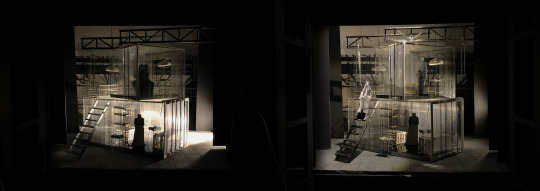
So, my stage design starting point from two of keywords: escape and the state of being alive. And I’m starting to think about how can I represent the state of being alive in my characters? Despair and closed. How can I show that the progress they want to escape from this environment? It is quit Unstable and constantly changing. So I continue my thinking, and ask myself, what kind of space could represent this kind of isolation and instability, it that has to be the kitchen this kind of space? I think in this story, it’s could not necessarily happen in the kitchen space, and I’ve abandoned the setting of the kitchen space. And I when did some research, the container just occurs to my mind. You can easily relate to the container as a special space, his degree of closure, and his unknown attributes to the destination.
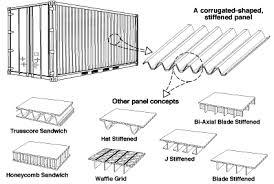
I use containers as the main sets on my stage. Then according to the stage design, I started to think what kind of environment or a specific period I should put my containers in it. Of course, it’s strange that you put the container in the 18th century, and meanwhile, I think that in other times, people could face this situation as well. I did some research, and I chose the 1920 or the period around 1920 as my reference, because 1920 is the period after the first world, with the rapid economic development, the people increase the quest of money and consumerism is rising, but at the same time, there were still have a huge gap between the lower class people and the upper-class people. Of course, we can argue about this period, but as a stage designer in this project, I have no limitation, and I don’t have a director, so I am a director as well in my version, so it could be an interesting choice for me, for Miss Julie.

I use the translucent plastic board to build up these containers. the reason why I chose this material is because I do not think the characters themselves can clearly see their irreversible destiny, and even if he wants to climb to the upper class, he can not change his servility. And Miss Julie is no exception, she even wants to bring her fragile bird cage while running away. Only we, as an audience, can see it clearly. I suppose the audience, as God, can see everything on this stage, so I used a transparent material to express that concept and then chose sandpaper to make the vertical stripes to mimic the shape of the container walls.
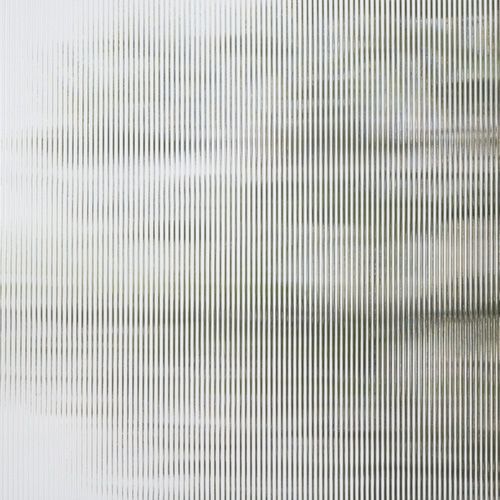

On the last scene of miss Julie’s suicide, suicide this action will not happen in my version, I want to use the different way to express her desperation. When miss Julie came out of her house, and the lighting turns off slowly, I remove all of the sets, and then miss Julie gradually into a large container, she out of the box, and walk into another big box that she can’t escape anymore. That’s why I made a curtain with the same texture, you can suppose the whole stage turned into a huge container, and finally, she stands in the front of the translucent wall, and light off totally.

Then is my costume design, my costume design based on new york factory worker in 1920 this period as well. The only bright color from Miss Julie, she wears casual trousers and low-cut white shirt, I want to express her sexy but easygoing. wearing a silk turban, it’s very popular in that period. And for traveling cloth of Miss Julie, I gave her a long silk cape with sparkles accessories, it fashionable. And also, Miss Julie’s fabrics choices are soft and delicate.For Chris, she has to wear a loose long dress, easy to do physical work.The fabrics quite rough and this grey tone color are stain resistant.And other workers, according to factory workers in New York, the main style of these workers is jumpsuits, convenient to work in a factory, I use a different kind of rough denim. And different with other workers, jean wearing a sleeveless vest, so, he can show off his muscle and it is easier to represent male hormone from this outfit.

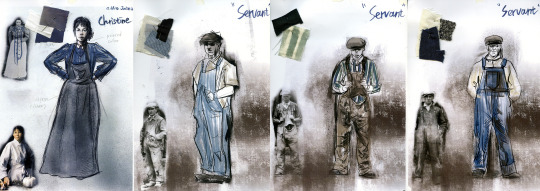
1 note
·
View note
Text
Theoretical and Critical Essay Behind the Silence

Among the American Avantgarde dramas in the 1960s, Robert Wilson made a great breakthrough with anti-traditional narrative pattern (Aronson, 2000). His visual dramas which called “image theatre” (Shevtsova, 2007) had many attempts at extending space, abandoning language, form, and plots and providing meditation space. His works in the 1970s, for instance, used little words or even featured silence. The expression speed is very slow, and is displayed on the stage together with other visual elements, creating an overlapping effect with its visual language. Observing the aesthetics and creative methods of his works in the early days, it can be concluded that they are closely related to his personal experience (Holmberg, 1996) and are greatly influenced by John Cage, an avant-garde composer of classic music in the United States (Morey, M. and Pardo Salgado, C., 2003). This paper will take Deafman Glance and Einstein on the Beach, a “silent opera” works of Robert Wilson in the 1970s and 4′33′’ a silence performance from john cage, as the example, and analyze its unique dramatic discourse from the aforesaid two perspectives.
Robert Wilson has several special experiences, which had exerted significant influence on his creation philosophy and methods. In his childhood, Wilson had cognitive learning disorder due to auditory processing disorder, and could not talk like ordinary people(Aronson, 2000). This made him fall behind peers in terms of reading and writing capability, stuttering also made it difficult for him to get along with other people well in school. Against this backdrop, he depended on more on pictures in communication, but not language (Shevtsova, 2007). Perhaps it was these experience that made him especially sensitive toward using non-verbal language to express the artistic conception of dramas, and thereby influenced his early works---using visual images as the major medium to communicate with the audience and putting language or text on the back burner and even ignoring them. Later, after adopting Raymond Andrews, a deaf and dumb boy, Wilson even used drama and movements to help and cure the autistic young poet Christopher Knowles, and cooperated with him in his early works(Holmberg, 1996). These helped him recognized that everyone is experiencing the world in two ways: one is perceiving the outside world externally; the other is concerned with the inner mind of a person, which is often depressed and can only be expressed in dreams. Being unable to communicate with language, Raymond Andrews depended on movements and visual images entirely to perceive the external world. Such silent communication triggered the curiosity of Robert Wilson, motivating him to explore how to present it on the stage and making him desired to use this method to express the artistic conception of dramas, and this is how his dumb show Deafman Glance was born(Aronson, 2000).

Deafman Glance is called Silent Operas (Holmberg 1996) which is created by the story of Medea’s killing. The slow rhythm of the show brought a suffocating depression. There was almost no dialogue in the show. At the opening, there was a deaf black kid in adolescence, together with his mother, a boy and a girl, all lying on the floor, and without moving for half an hour. Later, the mother poured a glass of milk for the little boy very slowly. Then, she put it back on the ground, gently stabbing the little boy with a knife and wrapping him in the sheet, and carefully wiping her knife, and then, she did the same for the little girl. The deaf kid was watching silently at the side. This scene lasted for one hour, such a slow action had changed the concept of watching. This was not the problem of tediousness, but had gone beyond human endurance, so he had told the audience in advance that they could freely move in and out (Morey, M. and Pardo Salgado, C., 2003).

In addition to the lines, the relative silence is also part of Wilson's vocabulary. This way of creation is influenced by John Cage (Morey, M. and Pardo Salgado, C., 2003). Cage is one of the most important avant-garde composers of World War II. He has overthrown the distinction between sound and silence in the traditional sense (Robinson, 2011). From the video of 4’33’’, his best-known magnum opus, we can see that Cage is sitting in front of the piano and opens the cover, silently sitting without playing. There are sounds of audience’s coughing and sniffing and other subtle sounds in the 4 minutes and 33 seconds. However, he seems to be intoxicated as if there is fair-sounding music. And he ends the show on time. Audiences are completely puzzled with his play. His expansion is that with the use of the "frame all possibilities" in the 4 minutes and 33 seconds, he has captured a distinctive "music" in time. Compared to the ready–made music works of the classical musicians, he has created a new way of making music works by infusing blank in different elements. Normally, it is impossible to have complete silence. In fact, there is still a lot of noise in the silence of our consideration. Hence, the distinction between sound and silence is relative rather than absolute(Cage, 1968).
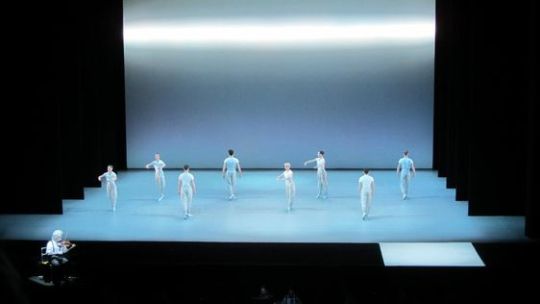
Wilson uses noise and quiescence in a way that artists use virtual and real space. By using both noise and silence, he has created a "virtual-real" composition in which silence becomes as effective as noise. At the beginning of the opera “Einstein on the Beach”, the choir repeat "1-2-3-4," "1-2-3-4-5-6," and "1-2-3-4-5-6-7-8 " as two people in the chair keep whispering random numbers. The former symbolizes music whereas the latter represents mathematics. The two overlapping sounds integrated into the repeated singing of the chorus make the audience feel the fusion of numbers and music. Without any language, the dual theme of science and art is indicated. In fact, there are lines but no dialogue in "Einstein on the Beach." The lines are just some inconsistent words without any narrative function like music and noise. There are also performers but no dramatic action in the opera. The gestures, movements and displacements of actors seem to be controlled by a mysterious force, without any motive, purpose, or relevance. Theatricality is not weakened. Instead, it simply doesn’t exist. Performers do not play a role. Their movement on the stage, which are just a juxtaposition of display in a non-meaning space, doesn’t conflict with, or isn’t associated with each other (Safir, 2012).
In conclusion, Robert Wilson's quest for quiescence leads to changes in the creative process and creative method. The visual image in his work has received so much attention that the language, words, and lines are no longer crucial elements. His quest for silence is not only reflected in the sound, but also in the unfinished plot. In this way, imagined pictures are unfolded before eyes. He’s seeking for the very moment enables the intention and space to accumulate and provokes the audience to muse and contemplate. Robert pursues drama not just from the traditional perspective. He also explores constraints on time, language, and even meaning and finally liberates these restrictions. So we can see that after continuous attempt at dramatic vocabulary, his openness and ability to huge range sound accept are also reflected in his work.
References
Aronson, A. (2000). American avant-garde theatre.: Routledge.
Cage, J. (1968). Silence. (Lectures and writings by John Cage.).
Cage, J. and Daniels, D. (2012). Sounds like Silence. Leipzig: Spector Books.
Holmberg, A. (2004). The theatre of Robert Wilson. Cambridge: Cambridge Univ. Press.
Morey, M. and Pardo Salgado, C. (2003). Robert Wilson. Barcelona: Ediciones Polígrafa.
Robinson, J. (2011). John Cage. Cambridge, Mass.: MIT Press.
Safir, M. (2012). Robert Wilson from within. Paris: Flammarion [etc.].
Shevtsova, M. (2007). Robert Wilson. Abingdon: Routledge.
0 notes
Text
Record of Puppet Show Process
Performing as a puppeteer with my classmates was such an incredible experiences. In this group collaboration project, our main subject is the puppet. And what we have to do in this project is creating five minutes puppet show based on homeless this topic. The story background is homeless people in the UK continued to rise in recent years, so, our APP team at the beginning of the design outline of the story, began to think about what caused the increase in the number of homeless, and what kind of puppet form we should choose to express the theme. At the first group meeting, we first arranged the different role of the group member to help us finish this project efficiently.

We decided that the first step in this project is designing and making a puppet. Because we believe that only when we finish the making of puppet, we can more conveniently design and improve the stories and movements in the real rehearsals. So, firstly, we use ROD this form of the puppet to express the theme of the homeless people, because we mainly want to clearly show the facial image and physical characteristics of homeless people, and also we want to design two completely different beggars in character design to make a contract. So, I design a thin bagger with a long face, and another beggar is quite fat, he has a big body. And then, when I making the head of the puppet, I use foam to shape head, and then I use DAS clay and Milliput these two kinds of material shaping facial details, and then use the acrylic to paint puppet’s head. Finally is the body of the making, in our group meeting, we’ve tied to use the newspaper to make a draft of puppet, and during this processing, we decided why not directly use newspapers, plastic bags these materials which are easy to be found in the streets to make puppet’s body, these materials from the street, and also can express the trait of beggars.


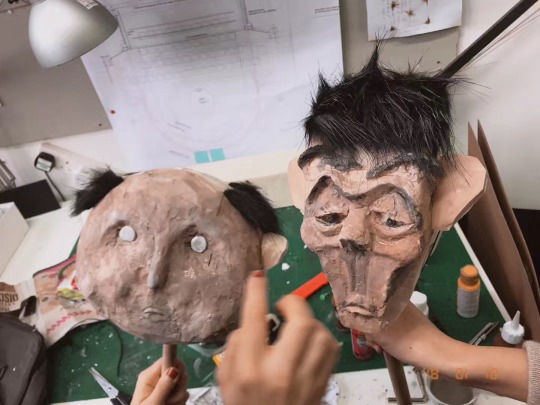

Secondly, we started the script. We are thinking about what caused the number of homeless in the UK. At the same time, we are thinking in reverse direction, is that all homeless people really have no way to live? And then we confirm that we want to create a comedy and let two puppets make a contrast or confrontation, resulting in the reversal of the plot in five minutes. Whether it is in the appearance or the behavior of the beggar, when people look more poor or tragic, it could easier to get people's sympathy or donation, which make some of the beggars pretend they have a bad life. We want to show the cruel theme of this reality with relaxing and interesting movement and music, making the viewer understanding what we want to express in a relaxed atmosphere. So, we design a dance at the opening, after the music, puppets immediately pretend sadly and no longer happy and try to get money, people passing these beggars may be attracted because of features of the beggar or the behaviors of the beggar. So, even though, the puppet looks very fat but he looks more sloppy and he is bald, it gets more people's donations. It seems to be a very unusual or funny scene, but it also satirizes the fact in real life. Our judgment standards might unstable because of these superficial behaviors or characteristics?

Finally, in the process of rehearsal, I think the most I learned from this puppet project is observing and how to observe people in normal life and transform these people’s life habit into our puppets. And also I learned how to cooperate with the group, even you have different ideas with each other, but you have to absorb these differences and try to find a balance between different people. How to observe normal people’s life for me it means that in the manipulation of puppet, we prefer to design movements just according our own imagination, so when we present these movements in performance may not seem natural or vivid, so Mark told us that we don’t need to move too much in every single moment, because we should use our observation in real life and make audience believe our puppet. And another thing I learned is cooperation, not only with our own group member but also theater’s staff, I think, if we have more preparation in advance, we can have more practice and communication with lighting staff and to develop our performance. In the end, Although this performance s very short, I got pleasure and knowledge of puppetry in these four weeks far outweigh the five minutes show can express.
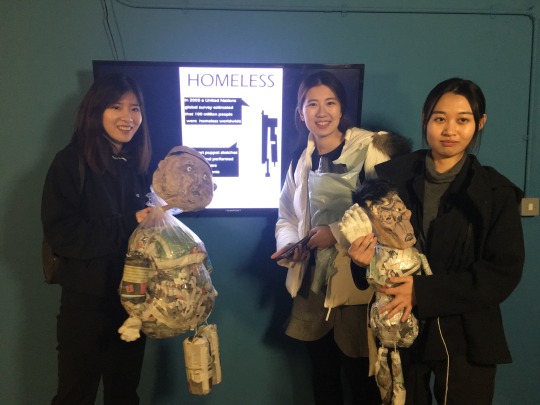
0 notes
Text
The critique of Les Miserables
Before I saw the musical version of Les Miserables, I had already watched the movie version and the magnificent scenes and the style designs of the characters deeply impressed me. Before I walked into the theatre, I thought how to demonstrate the grand historical backgrounds and the complicated and twisted relationship among characters in such a confined space. After watching the musical, I found the answers of all those questions.
First of all, the narrative functions of the music were very prominent. Apart from the singing, which was a factor controlled by the actors and actresses in a subject way, the compound mode of the voice parts straightforwardly advanced the stories and the character relations, which were also the most apparent features compared with other musicals. When combining the formation of revolving stages in stage design, dynamic flow of the characters was more diversified and flexible, intensifying the fluency of the narration.

In terms of the stage design, what strikes me most was the street barricade war. In particular, after the revolt failed, the scene on the stage was very unforgettable when all the dead bodies of the soldiers lied on the street barricade and the whole audience kept the extremely silence. After a long period of time, the solo oboe came through and the melody was the exactly the same as the music when Jean Valjean asked the God to take him home. In such a depressing music, the street barricades begin to swing slowly, just as the slow motion in the movie, so that the remains of every dead soldier could be shown in front of the audiences after it turned 360 degrees. At that exact moment, the leader of the revolt fell on the center of the street barricade and below his body was a red flag that was similar to the blood, which was extremely red and striking under the light. It was impossible to display the image of the barricade in the realistic technique, but a monument with a strong expressive force was about to achieve it. When the audiences were looking at the monument with reverence, they felt sad and were moved by the death of the young people who strived hard for the future on the one hand, and also were significantly shocked by the overall design of the monument on the other hand. The stage design of this musical took the “authentic history and life” as the preconditions, however, the ultimate goal was not to “reappear the authentic history and life”, but to base on the fundamental goal of “local realism and overall abstraction” and create a strong and very expressive stage image after using the methods such as refining, exaggerating and expanding to display the real character and architecture image under the social image.
Generally speaking, I reckoned that this musical could attract global audience since its public show in the UK in 1985 because its magnificent and historic music withstood the test of the audiences, apart from the factors such as the immense reputation of the masterpiece. In addition, grand visual displays also contribute to its success.
0 notes
Text
The critique of Matilda
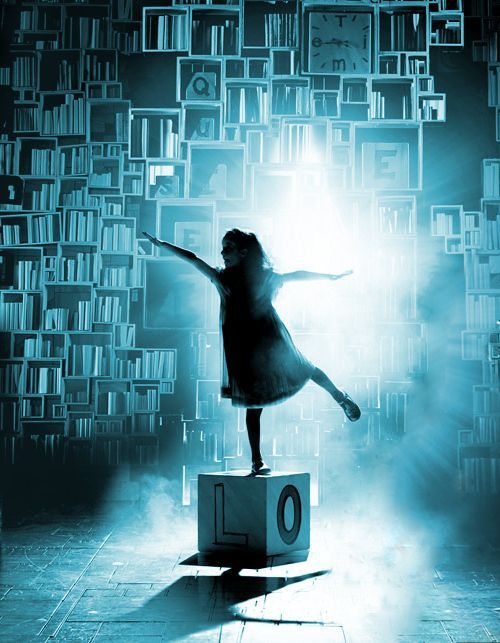
I first began to know the musical Matilda on the award ceremony Tony Award and Matilda gained a complete victory by winning the Best Musical at the award ceremony that year.
The author described the story of a little girl Matilda, who read the masterpieces of most classical writers at the age of five. Unfortunately, however, this extremely intelligent little girl had the most vulgar and snobbish parents and the most vicious principal. She had her own ways to cope with this and she established a deep friendship with kind Honey in her fighting against principle Trunchbull. With a high expectation, I walked into the theater and the excellent performance of this musical was beyond my imagination. When I first entered the theater, I saw the stage, picture frame and the wing space which was surrounded by the wood bricks of different sizes, making the audience remember the visual element of cubes. The visual element was also the visual center of the stage design of this musical and it reappeared for many times in the following scenes. Then it seemed that there were countless mysteries in the scene to be discovered by the audience and actors with the development of the storyline. For example, the protagonist unexpectedly opened a door in a different location of the stage and took out her collections. Every little door emitted a various beam of light, which was extremely similar to the scenes in the fairy tales. To create the feeling of tension, the picture frames on the stage hid dozens of laser lights, so that then the principal was conducting the searching, those laser lights were scattering everywhere among the audience. It seemed that the whole theater was a part of the action movies, which was exactly the reason why I admired the West End musicals. The staff would make complete preparations before the show, changing the spaces such as the theater, stage and the backstage to suit the setting of this show. Probably, the staff has paid huge investment in personnel, materials and finance just to achieve a small visual effect. That how they ensured the perfect effect of the show. The same applied to Matilda.

Apart from stage art, the excellent performances of the young actors and actresses also impressed the audience. There were four actresses playing the little heroine. With such complete cast members, theater equipment and a complete set of operation model, this work was destined to succeed, so do the other West End musicals. The musicals in the UK are able to go to the world because of these astonishing works and they have their own things to express.
0 notes
Text
The design proposal of Miss Julie
When I first read Miss Julie, I can see that the author wants to express the concepts of class or feminism. So people living in different classes, what their life is like? If people from different classes are connected, what kind of outcome it will bring out? Thus, after the second time I read Miss Julie, I realized what makes this play most appealing to me is that the spiritual core of the play is to express the state of being alive. Whether it is Miss Julie or Jean, both upper-class and lower-class, they have no chance to counter-attack in the face the unchangeable institutions and social class structures, and all of these characters, they want to escape from this family, from this the state of being alive, whatever, this feeling of desperate interested me most in this script.

So, my stage design starting point from two of keywords: escape and the state of being alive. And I’m starting to think about how can I represent the state of being alive in my characters? Despair and closed. How can I show that the progress they want to escape from this environment? It is quit Unstable and constantly changing. So I continue my thinking, and ask myself, what kind of space could represent this kind of isolation and instability, it that has to be the kitchen this kind of space? I think in this story, it's could not necessarily happen in the kitchen space, and I've abandoned the setting of the kitchen space. And I when did some research, the container just occurs to my mind. You can easily relate to the container as a special space, his degree of closure, and his unknown attributes to the destination.

I use containers as the main sets on my stage. Then according to the stage design, I started to think what kind of environment or a specific period I should put my containers in it. Of course, it's strange that you put the container in the 18th century, and meanwhile, I think that in other times, people could face this situation as well. I did some research, and I chose the 1920 or the period around 1920 as my reference, because 1920 is the period after the first world, with the rapid economic development, the people increase the quest of money and consumerism is rising, but at the same time, there were still have a huge gap between the lower class people and the upper-class people. Of course, we can argue about this period, but as a stage designer in this project, I have no limitation, and I don't have a director, so I am a director as well in my version, so it could be an interesting choice for me, for Miss Julie.

I use the translucent plastic board to build up these containers. the reason why I chose this material is because I do not think the characters themselves can clearly see their irreversible destiny, and even if he wants to climb to the upper class, he can not change his servility. And Miss Julie is no exception, she even wants to bring her fragile bird cage while running away. Only we, as an audience, can see it clearly. I suppose the audience, as God, can see everything on this stage, so I used a transparent material to express that concept and then chose sandpaper to make the vertical stripes to mimic the shape of the container walls.


On the last scene of miss Julie's suicide, suicide this action will not happen in my version, I want to use the different way to express her desperation. When miss Julie came out of her house, and the lighting turns off slowly, I remove all of the sets, and then miss Julie gradually into a large container, she out of the box, and walk into another big box that she can’t escape anymore. That's why I made a curtain with the same texture, you can suppose the whole stage turned into a huge container, and finally, she stands in the front of the translucent wall, and light off totally.

Then is my costume design, my costume design based on new york factory worker in 1920 this period as well. The only bright color from Miss Julie, she wears casual trousers and low-cut white shirt, I want to express her sexy but easygoing. wearing a silk turban, it’s very popular in that period. And for traveling cloth of Miss Julie, I gave her a long silk cape with sparkles accessories, it fashionable. And also, Miss Julie’s fabrics choices are soft and delicate.For Chris, she has to wear a loose long dress, easy to do physical work.The fabrics quite rough and this grey tone color are stain resistant.And other workers, according to factory workers in New York, the main style of these workers is jumpsuits, convenient to work in a factory, I use a different kind of rough denim. And different with other workers, jean wearing a sleeveless vest, so, he can show off his muscle and it is easier to represent male hormone from this outfit.


1 note
·
View note



